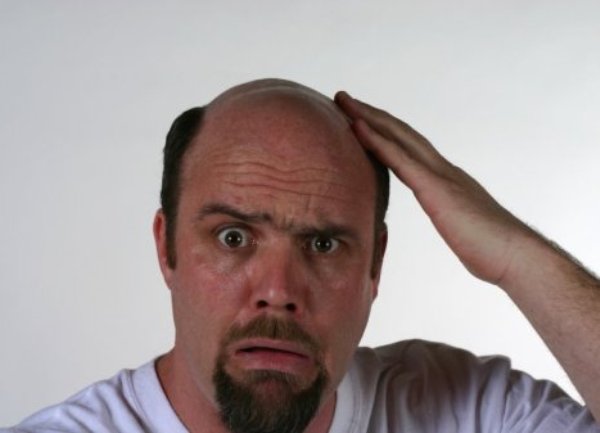Most people have more than 100,000 hairs on their head, so the average daily hair loss of between 50 and 100 hairs is virtually unnoticeable. However, a variety of conditions can cause unwanted hair loss, resulting in thinning hair, a receding hairline, or patchy growth on the scalp. Aging is a culprit for many, as thinning is part of the cost of growing older, but sometimes other issues intervene to disrupt hair growth.
What Health Conditions Can Cause Hair Loss?
Temporary hair loss can occur when the scalp and hair become infected with ringworm or other, similar issues. This is typically not permanent. When the infection clears up, the hair usually grows back. Thyroid disorders can also cause hair loss, because the thyroid is responsible for regulating the body’s hormone levels. Once diagnosed, conditions affecting the thyroid are often quite treatable.
Smooth, round hairless areas can signify a disease known as alopecia areata. This condition causes the immune system to attack hair follicles, resulting in loss of hair. Other possible culprits include diseases that cause scarring on the skin, such as lichen planus and lupus, or a significant shock to the body, such as a high fever or significant weight loss.
The drugs that treat serious illnesses such as depression, high blood pressure, heart problems, cancer, and arthritis can also cause hair loss. This can be a tough to handle on top of the stress such a disease can cause. In most cases, the benefits to the medication far outweigh the hair loss side effect, so those suffering from this condition typically consider solutions such as scarves and wigs to boost self-confidence.
How Do Heredity and Hormones Impact Hair Loss?
Men and women who notice changes in the hair as early as puberty can be the victims of male-pattern and female-pattern baldness. This hereditary condition is triggered by specific sex hormones, and the resulting hair loss is typically permanent. Women often encounter temporary thinning of their hair as a result of changes or imbalances in their hormones. Some of these include menopause-related hormone changes, starting or stopping birth control pills, pregnancy, and childbirth.
Are There Lifestyle Choices and Habits that Cause Hair Loss?
As with many of the things women do to improve their appearance, there can be drawbacks to some hairstyles. These can include loss of hair. This is known as traction hair loss, and it typically results from such techniques as cornrows, tight braids, and ponytails. The constant pulling on the hair root puts stress on the follicle, which can damage future growth. Many styling alternatives are just as attractive, but far easier on hair.
Some individuals are afflicted with a disorder that causes them to pull out their own hair. This can leave bald spots, which are painful both physically and emotionally. Fortunately, treatments do exist to ease the symptoms of this condition, and hair usually grows back when the behaviors stop.
What Risk Factors Contribute to Hair Loss?
Unfortunately, one of the strongest risk factors for hair loss is heredity, and there isn’t much that can be done to combat a family history of male-pattern and female-pattern baldness. Genes can influence the extent of baldness, the age at which the loss begins, and the pattern that it takes.
The use of excessive amounts of hair dye, perming solutions, and chemical hair straighteners will cause rapid deterioration of hair health. Overuse tends to cause hair to become brittle and break easily. However, this can be prevented with careful, responsible use of such products, or a move to a more natural look.
Good nutrition is a critical factor in keeping hair healthy. When iron and protein are missing, hair can start to thin. Individuals with eating disorders or those that try crash dieting frequently find that their hair suffers. The best prevention is a balanced diet that includes plenty of fruits, vegetables, and lean protein.
Next Steps
Those suffering from hair loss often find that the sooner they see their physician, the faster the causes of the condition can be diagnosed. Some are treated quickly and easily, so that hair loss is kept to a minimum. In more serious situations, health care professionals are often able to provide valuable insight on the best way to handle the issue. Many individuals notice their self-esteem suffers when their hair loses its former thickness and luster. Catching and treating the problem early on leads to better outcomes.

